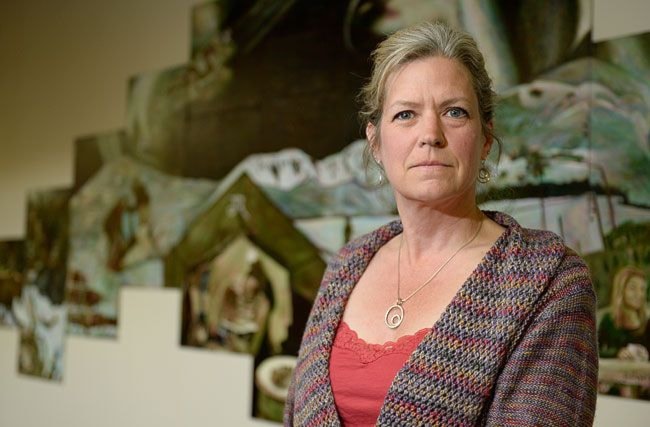Imagine running for three days, non-stop, without food or water.
Now imagine you round the last corner, in sight of home, but your house is no longer there. In its place stands a mine site, a tailings pond or a sprawling, arid subdivision.
For the Blackpoll warbler, that’s exactly what can happen if enough of the northern boreal forest isn’t protected.
Every spring, the Blackpoll warbler flies from deep South America back to its breeding grounds in the Peel River watershed and other areas of the northern boreal forest. The flight requires crossing 3,000 kilometres of unbroken ocean without stopping.
The little birds weigh only 20 grams when they begin their flight and lose enormous amounts of weight by the time they arrive home, exhausted.
Without that home to come back to, the delicate birds often can’t survive.
A new report, published by the Boreal Songbirds Initiative and Ducks Unlimited, calls for protecting half of the songbirds’ breeding and nesting grounds, which stretch from Alaska to Newfoundland.
Fiona Schmiegelow, a University of Alberta professor in residence at Yukon College, has been studying boreal birds and the forests they live in for two decades.
“My work focuses on looking at the effect of land-use changes on boreal bird populations,” she said.
“What we found is that there are certain species of boreal birds that are quite sensitive to land-use changes, especially human activity. Things like forestry operations, oil and gas operations, things that change the structure of the forest, whether it’s the physical structure - the number of trees, etc. - or the age structure of the forest - removing the older trees.
“Loss of forest to things like agriculture has also been a significant issue over time,” she said.
The recent report, called Boreal Birds Need Half, looked at 300 different species of birds that call the boreal home. It recommends protecting about three million square kilometres of forest between Yukon and Newfoundland.
“We’re still pretty fortunate in the Yukon. We have a lot of landscapes that are still pretty untouched, especially wetland areas that haven’t been impacted to date,” Schmiegelow said.
“A lot of the bird populations that are declining in other parts of the country are actually stable up here, or doing relatively well.”
In the Yukon, birds like the rusty blackbird, olive-sided flycatcher, and the inexhaustible Blackpoll warbler rely on the territory’s vast swaths of untouched forest and wetlands.
One of the most important areas for these birds is the Peel watershed. So are the wetlands near Old Crow.
“The Old Crow Flats, for example, is internationally recognized as a wetland of international significance. That’s a really important area for waterfowl like ducks to go and molt,” she said.
Schmiegelow has studied the effects on bird populations across Canada, including some of the most disturbed parts of the boreal forest around Fort McMurray’s oil sands.
“The changes around Fort McMurray have been really quite astounding in the past two decades,” Schmiegelow said, but that doesn’t mean that resource extraction and conservation can’t co-exist.
The report calls for protecting half of the boreal, but what that means is protecting it from large-scale industrial development, similar to what’s happening in the oil sands.
“But we need to not be complacent about it either. Landscapes can change very quickly when the economy drives it. Things like the land-use planning process is very significant for bird populations.
“The thing with boreal birds that we have to remember is that they don’t just occur in small pockets. They occur across entire landscapes, and we need to be protecting those landscapes,” she said.
As important as having well-managed lands where development is allowed and monitored, Schmiegelow said it’s equally important to have some areas withdrawn from all development, to be used as control areas.
Once scientists start studying how birds are handling a new mine in a certain area, there needs to be an undeveloped benchmark that they can measure against, somewhere that the birds can live as they have for millennia.
Back to the Blackpoll warbler, and its epic annual journey: hardly any other animal crosses through such a diverse range of ecosystems going from the far north to the far south, which gives the Blackpoll a unique perspective on the climate changes affecting huge swaths of the world.
It also makes them the perfect barometer and early warning system because there are so many different potential changes that can affect them. They could be a 21st century equivalent of canaries in a coal mine.
The birds are late this season. To many Yukon bird enthusiasts, that might be simply a puzzlement or a curiosity, but if you look closer it can be an indicator of changes in faraway climates impacting us up here.
“We’ve had a really easy winter up here,” Schmiegelow said, “but as many people know, it’s been a really hard winter for many places down south. When I was hearing about below freezing temperatures in Texas and other places where these birds go to find warmth and safety through the winter, I was worried about them.”
Contact Jesse Winter at
jessew@yukon-news.com
